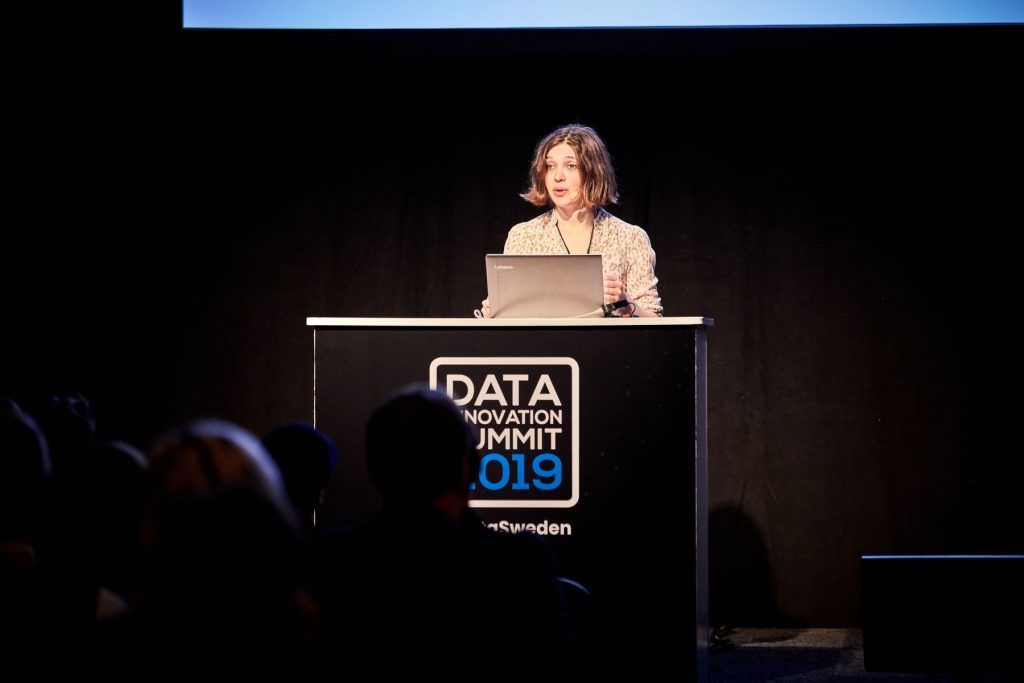Recently, Natural Language Processing (NLP) has been one of the most demanded and talked about topic at our events. And it’s no coincidence. NLP is one of the most popular forms of AI because of two reasons. First, it deals with language – the fundamental form of intelligence. And second, it’s the biggest investment companies can make. Why you may wonder? Because with NLP investment it’s really easy to prove your RIO and see results in a short time. It’s expected that the Natural Language Processing market will be worth US$ 28.6 Bn in 2026, which is a really good sign for companies thinking about investing in NLP. On top of that, it’s expected that a quarter of companies globally will have integrated some sort of NLP into their customer service by 2020.
As people live more of their lives online, there is a growing need for high-quality natural language processing on social media posts, chat logs, and forum replies.
What is NLP and how can organisations use it in their companies?
Natural Language Processing (NLP) is a subfield of artificial intelligence which deals with the interaction between humans and computers. Simply put it’s the science of gaining meaning from text data and enabling human-machine interaction in the simplest possible manner. The goal of NLP is teaching a computer how to understand human language.
As humans, we speak in a hundred different languages and dialects, each with different grammar and syntax, use slang, leave out punctuation and use abbreviations, in speech and text likewise. Just like us humans, it’s quite chaotic and unstructured. Our communication online follows the same pattern.
Computers, in contrast, communicate with tons of zeros and ones in a pretty structured manner. And NLP makes possible for computers to teach computers how to listen, understand and respond in a human language. NLP uses various techniques to understand the complexities of human speech.
In the business environment, NLP it’s the technology integrated into chatbots, virtual assistants, translation services, hiring tools, marketing tools, and much more. We’ll focus on some use cases that can improve customer experience.
Use cases for customer experience
These are just some of the use cases NLP can be used to improve customer experience.
1) Chatbots


Customer service is one of the use cases where chatbots are deployed. They have caused a real stir in recent years. Facebook and WhatsApp as chat platforms have both more than 1 billion users. So, it’s obvious that sooner or later everyone will be using some sort of chat platform, explains Hendrik Luuk, CTO at Alphablues. And as more people are spending their time chatting, this is affecting enterprises. Nowadays, the majority of customers contact a brand via chat. Instead of employing more people to manage these inbound customer requests, the chat can be automated using NLP and NLU (natural language understanding), a subset of NLP. This way automating your customer service with chatbots and NLP can seriously help you cut down on your costs. One more reason for deploying chatbot automation with NLP is the ability to scale your customer service. If one customer service can handle 1 phone call at a time, and 5 chats – a chatbot can handle more than a million customers. And of course, automated chatbots enhance your customer experience, because your customers receive a reply immediately, accurately and at any time of the day.
2) Advertising and marketing


If the main focuses for marketers in the past were audience demographics and psychographics, now they are quickly adapting to the new digital era. Analyzing digital footprints such as social media, emails, search keywords, and browsing behaviour, NLP helps marketers create personalized and highly targeted marketing campaigns. NLP technology enables social prospecting to sift through social media mentions of a brand and purchase intentions. Usually, NLP uses keyword matching to mine expressions of interest and profiles of people corresponding to the customer criteria. But latest NLP technology also takes into account the context in which the keyword was mentioned. This way, customers are displayed content which they are really interested in.
3) Reputation and sentiment analysis


The web and digital media present fruitful sources from where companies can learn about customer needs, opinions and intent. NLP enables organisations to listen and understand their customers’ voice online and the sentiment behind it. The sentiment and emotion behind online conversation are really valuable and determines customers’ choice and decisions. Companies are able to search the entire web for their brand and product reference and take appropriate action. This has proven favourable for businesses because they can better understand their customers and make appropriate business decisions.
NLP in online conversation
NLP is still in its early days, but there are ways in which it is really helpful in everyday life. “As people live more of their lives online, there is a growing need for high-quality natural language processing on social media posts, chat logs, and forum replies,” says Katie Bauer, Senior Data Scientist at Reddit.


Communication online has already started changing to that level that brands’ only means of communication with customers is text mediated. Online conversation, such as messages and social media comments are of great value for NLP analysis because much can be learnt from seemingly simple comments about people’s intents and opinions.
During her presentation at the annual Data Innovation Summit, Katie also stated that “this […] is unprecedented in history because we would have never thought of recording something as small talk”. People would have never done a serious data analysis on a forum thread containing witty comments.
Challenges with NLP
Yet, NLP is still in the early days and of course, data scientist come across many challenges. According to Katie, some of the biggest challenges with NLP come from just representing language data well. Taking into account that human language is really dense with many levels of meaning, from the intonation with which a word is said, to the social context, to the different style of writing for various purposes, it’s really hard for NLP to capture all nuances and relevant information of language. So if you are bad at noticing whether someone is being sarcastic and you are trying to build a model to classify sarcasm, you won’t have much progress because machines are just bad in making social judgments.
Apart from noticing social context and emotion in language, other common challenges with NLP are:
- Breaking the sentence, or previously known as “sentence boundary disambiguation”, refers to the process where a machine should separate the paragraph into appropriate sentence units. It is a critical process because when we have a highly complex data in the form of tables, graphics, notations, page breaks, it’s not so easy to separate it recognizable sentence parts. This kind of data should be processed so that the machine can derive meaning from it.
- Tagging part of speech (POS) – When people communicate, they inherently understand the meaning of the speech, there is no need to identify individual parts of speech or text. But when a machine learns, it must formally understand the place of each word in a sentence, paragraph or document.
- Setting the context is one of the most challenging and important tasks in the NLP process as it entails teaching a machine how to make out a context from a part of the text. When the machine is dealing is homonyms, like for e.g. “a bank” as a financial institution, and “a river bank” the area alongside a river, it should be trained to understand that the context of the two is different.
- Understanding semantic meaning – Relying only on a linguistic analysis is not enough for a machine to apply learned knowledge. In order to successfully apply knowledge, a machine must understand the semantics of vocabulary terms in the text. An example is If two words appear in the same context, but the overall information of the sentence is different because of the difference in semantics.
- Transforming unstructured data into a structured format refers to breaking down a complex sentence into structural elements such as named entity, an event, a financial element and its values under different time scales if there are any. This process is extremely challenging with linguistic because every sentence has a unique still it is written in.
Final thoughts
NLP holds a huge potential for businesses to optimize their customer experience. As NLP is advancing even more, it’s changing the way customers interact with a brand. But it also broadens the scope of insights that companies can get on their customers. What’s more, companies are able to hear what customers say in their own words. And based on that data, they can create more relevant strategies.















Add comment